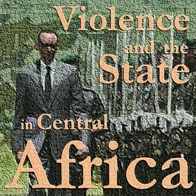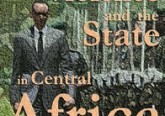
When president Nkurunziza announced his intention to run for a third term, serious unrest exploded in the streets of Bujumbura. In the last three weeks, violent clashes with the police have triggered fears of a new civil war and destabilisation of the entire African Great Lakes region. So far, the international community has been unable to calm the situation and over 110,000 Burundians have already fled the country. The Oxford Central Africa Forum hosted a round-table on the 15th of May to examine the causes of the current situation and discuss the prospects for peace and democracy in Burundi and the region. It gathered six researchers who have conducted fieldwork in Burundi:
- Professor Patricia Daley, School of Geography and the Environment [PD]
- Dr Andrea Purdekova, African Studies Centre [AP]
- Dr Olivier Sterck, Centre for the Study of African Economies [OS]
- Rowan Popplewell, School of Geography and the Environment [RP]
- Jean-Benoît Falisse, Department of International Development [JBF]
- Benjamin Chemouni, Department of International Development, London School of Economics [BC]
We present some of their analysis and findings here in a short series of three articles. In this first post, we explore the forces present on the ground.
The power balance between the forces present on the ground is obviously a key determinant in the current crisis. In this first section, the panellists sought to better understand some of the key forces in current crisis and address, among others, the following questions: Who are the protesters? What is the political opposition doing and how is it different from the civil society? What is the role of the army and the police?
So far most of the protests have been concentrated in Bujumbura, with a few incidents reported in the Mugamba region and in Burundi’s second city, Gitega. The protesters mostly come from the city but they have included both Hutu and Tutsi, a lot of young people and students and also, on some days, women and middle-aged people. Virtually all the neighbourhoods (communes) of Bujumbura have been affected, with particularly explosive situations in Musaga, Cibitoke, and Nyakabiga. The situation in the countryside is harder to analyse, especially since a prime source of information, the independent media, has been shut down by the government and their facilities were destroyed during the coup attempt. Historically, Pierre Nkurunziza and the CNDD-FDD have had a strong support in the countryside, and since the beginning of the protests the government has maintained that “99% of the country is peaceful”. Yet, the 110,000 Burundians who have fled the country are mostly not from Bujumbura, which seems to indicate that the situation is also very tense, and potentially violent, in the countryside. Efforts to map the current violence show a few incidents in the countryside as well. [JBF]
The political landscape is fragmented. The CNDD-FDD (National Council for the Defence of Democracy/Forced for the Defence of Democracy) historically had most of its votes from rural areas, as shows the map of the results of the 2010 municipal elections. The support for Pierre Nkurunziza and the CNDD-FDD was overwhelming in most of the country. There was also, during these elections, a strong and clear link between support for CNDD-FDD and the presence of demobilized ex-combatants from CNDD-FDD (correlation is 0.6). [OS]


Contrary to the CNDD-FDD, the support for opposition parties (FNL, FRODEBU, UPRONA and MSD) in 2010 was concentrated in Bujumbura Mairie and in the South West of the country. During the last elections, many opposition parties boycotted the presidential and parliamentary election, denouncing massive electoral fraud during the municipal elections and claiming that municipal elections were not free and fair and the next polls unlikely to be so. This strategy has proved disastrous for them as the CNDD-FDD consolidated its control over all state institutions. Pierre Nkurunziza has been travelling very frequently to rural areas, and seems may have preserved his advantage there, where he used to be very popular. Over the past ten years, the CNDD-FDD has created an impressive network of socio-economic associations, party buildings and “office hours” (permanences) in the countryside.
The opposition parties face several barriers that may prevent them to gain the support they need to become a more visible force of the Burundi society, especially in the countryside. Firstly, they lack funding -and the ruling party has secured the control of key resources. Secondly, they are the victims of alleged repression in the form of arbitrary detention and violence, as evidenced by recent UN and NGO reports. Thirdly, recent laws limit the possibilities of the opposition. For instance, a 2012 law determines fines and prison sentences against opposition leaders guilty of “falsehood or slander with the intention to disturb peace and security”. Another law also prohibits the formation of coalition outside periods of electoral campaigning, and yet another law states that “organizations should notice four days in advance to local authorities if they plan a demonstration of a party meeting. These can be cancelled or forbidden unilaterally if there is a risk to disturb public order”. In sum, it seems complicated to see a strong opposition emerge in such a fragmented and repressive landscape. [OS]
The CNDD-FDD used to be a complex political animal, with its different internal factions sharing and disputing power. The recent stance of senior party members against the third mandate has led to the exclusion of most dissident voices and the Nkurunziza camp establishing its dominance over the party apparatus. The practice of exclusion of dissident voices is not new for CNDD-FDD. After the 2005 election already, the fractious CNDD/FDD expelled party members who might have posed a challenge to the presidency. The party split following the arrest and imprisonment of party leader, Hassan Radjabu – a key strategist in the civil war – divided members, leading to key figures, such as Alice Nzomukunda and Pascaline Kampayano deserting the party and forming new offshoot parties. In 2007, Radjabu was sentenced to 13 years imprisonment for treason, but ‘escaped’ from prison in March 2015. How much people will differentiate the party from Mr. Nkurunziza remains a question. [JBF & PD]
The civil society has been at the forefront of protests, which emerged against a backdrop of rising tensions with the Burundian Government. They helped to bring people onto the streets, successfully tapping into widespread public anger over recent events, as well as long-term frustrations generated by sustained political and economic marginalisation and ongoing human rights violations. The Government responded by temporarily detaining one civil society leader and issuing arrest warrants for other activists. Although leaders of the civil society campaign against the third mandate publically condemned the coup, they called for protests to continue. However it is important to note that only a small proportion of civil society groups are involved in the protests; namely those groups that are based in Bujumbura who are focused on governance and human rights issues and regard themselves as watchdog responsible for holding the government to account. In a country where political opposition is weak and fragmented, these civil society groups are often regarded as the de-facto political opposition. Their involvement in recent protests, alongside members of opposition parties and their youth militias, will do little to challenge this perception among Government supporters. [RP]
A key factor affecting whether the country descends into more violence is the role in the current violence of the Police, the ruling party’s youth militia (imbonerakure) and the SNR (National Intelligence Service), as well as that of the more equally ethnically divided military. The Police were the instrument of repression before and after the 2010 elections and seemed to be playing the same role in the contemporary period. The SNR was also used repressively, and has also been used to root out opposition to the President among Hutus in Burundi and in the diaspora in neighbouring countries. The fact that Nkurunziza’s office was able to denounce the coup whilst he was still in Tanzania and stated that security forces were looking for the perpetrators, suggests that the SNR is far more resourced and effective than in the past. This is partly due to the training they would have received as part of Burundi’s contribution to international peace-keeping missions. [PD]
During the 2010 elections, the imbonerakure were already active in the intimidation of opposition candidates and their supporters. Since the ville morte days of the mid-1990s, Burundi’s youth have been mobilized by political parties to perpetrate political violence. Reports suggest that the imbonerakure are armed and the flight of over 110,000 Burundians to neighbouring countries is partly a consequence of the intimidation being carried out by the youth militia. Fifty per cent of Burundi’s population is under 17 years. Rates of youth unemployment are high at around 80 per cent. Consequently, unemployed and disaffected youth are drawn into complex patronage relationship with political officeholders and are easily mobilized into youth wings of political parties. [PD]
The military is well trained and better armed due to Burundi having the highest military expenditure of any country in the East African region and support from the US and Belgium; over 2.39% of Burundi’s 2012 Gross Domestic Product. In effect, the military is more professional and its level of ethnic integration (50/50 Hutu/Tutsi) means that it is likely to take a less divisive stance, unless non-sectarian senior officers are removed. Following the Arusha agreement and the demobilization, the army has been heavily transformed. Its composition is more or less balanced in terms of belonging to former rebel groups. Efforts have been made to transform the army into a professional corps which, according to the Arusha agreement, should remain neutral: “the members of the new force are prohibited from taking part in any political activities or demonstrations”. These transformations have been successful in improving the image of the army. In comparison, the police and the intelligence service are perceived as untrustworthy institutions controlled by the CNDD-FDD. [PD & OS]
For parts two and three of this series, see here and here.





No Comment